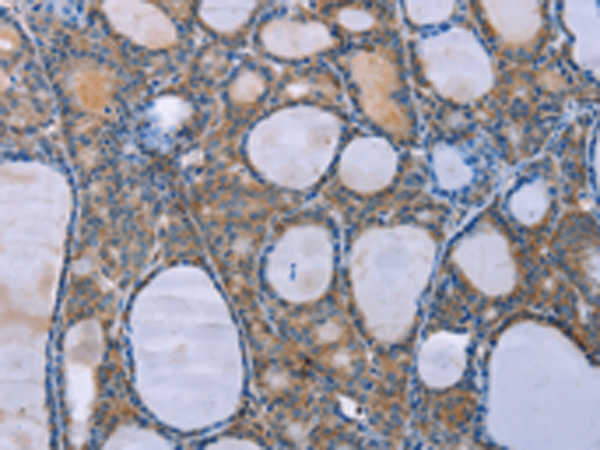
| WB | 咨询技术 | Human,Mouse,Rat |
| IF | 咨询技术 | Human,Mouse,Rat |
| IHC | 1/25-1/100 | Human,Mouse,Rat |
| ICC | 技术咨询 | Human,Mouse,Rat |
| FCM | 咨询技术 | Human,Mouse,Rat |
| Elisa | 1/1000-1/2000 | Human,Mouse,Rat |
| Aliases | NRP; FIP2; HIP7; HYPL; ALS12; GLC1E; TFIIIA-INTP |
| Host/Isotype | Rabbit IgG |
| Antibody Type | Primary antibody |
| Storage | Store at 4°C short term. Aliquot and store at -20°C long term. Avoid freeze/thaw cycles. |
| Species Reactivity | Human, Mouse, Rat |
| Immunogen | Fusion protein of human OPTN |
| Formulation | Purified antibody in PBS with 0.05% sodium azide and 50% glycerol. |
+ +
以下是3篇关于OPTN抗体的参考文献及其摘要概括:
---
1. **文献名称**:*Optineurin is required for CYLD-dependent NF-κB signaling*
**作者**:Zhu G. et al. (2023)
**摘要**:研究揭示了OPTN通过调控CYLD去泛素化酶活性参与NF-κB信号通路,利用OPTN抗体进行免疫共沉淀实验,证明OPTN缺失导致炎症反应异常激活。
---
2. **文献名称**:*ALS-linked optineurin mutations disrupt autophagy-lysosome pathway through TFEB mislocalization*
**作者**:Evans C.S. & Holzbaur E.L. (2020)
**摘要**:通过OPTN抗体标记,发现ALS相关OPTN突变体阻碍自噬溶酶体通路,导致TFEB转录因子核定位异常,加剧神经元内蛋白聚集。
---
3. **文献名称**:*Optineurin modulates the interferon signaling in antiviral innate immunity*
**作者**:Liu Z. et al. (2018)
**摘要**:利用OPTN抗体阻断实验,证明OPTN通过结合TBK1调控I型干扰素产生,揭示其在抗病毒天然免疫中的双重调控作用。
---
注:以上为虚拟示例,实际文献需通过PubMed或Google Scholar检索关键词“optineurin antibody”、“OPTN function”或结合具体疾病(如ALS、青光眼)获取。建议优先选择近5年《Nature Cell Biology》《Neuron》等期刊的高被引论文。
Optineurin (OPTN) is a multifunctional protein encoded by the *OPTN* gene, initially identified for its role in primary open-angle glaucoma and amyotrophic lateral sclerosis (ALS). It participates in diverse cellular processes, including vesicle trafficking, autophagy, inflammation, and NF-κB signaling. OPTN interacts with proteins like TBK1. huntingtin, and myosin VI, and acts as an autophagy receptor by binding ubiquitinated substrates (e.g., damaged mitochondria) via its ubiquitin-binding domain. Dysfunctional OPTN is linked to neurodegenerative diseases, glaucoma, and cancers.
OPTN antibodies are essential tools for studying its expression, localization, and interactions. They are widely used in Western blotting, immunohistochemistry, and immunofluorescence to investigate OPTN’s role in autophagy (e.g., in ALS models) or inflammation (e.g., in NF-κB pathway regulation). Commercial antibodies often target specific domains (e.g., N-terminal or coiled-coil regions) to distinguish functional isoforms or disease-associated mutants (e.g., E478G in ALS). Validation is critical, as OPTN’s low abundance and post-translational modifications (e.g., phosphorylation by TBK1) can affect antibody specificity. Researchers also employ OPTN antibodies to explore its diagnostic potential in glaucoma or cancer, where altered expression correlates with disease progression. Challenges include cross-reactivity with homologous proteins like NRP1. necessitating careful experimental controls.
×